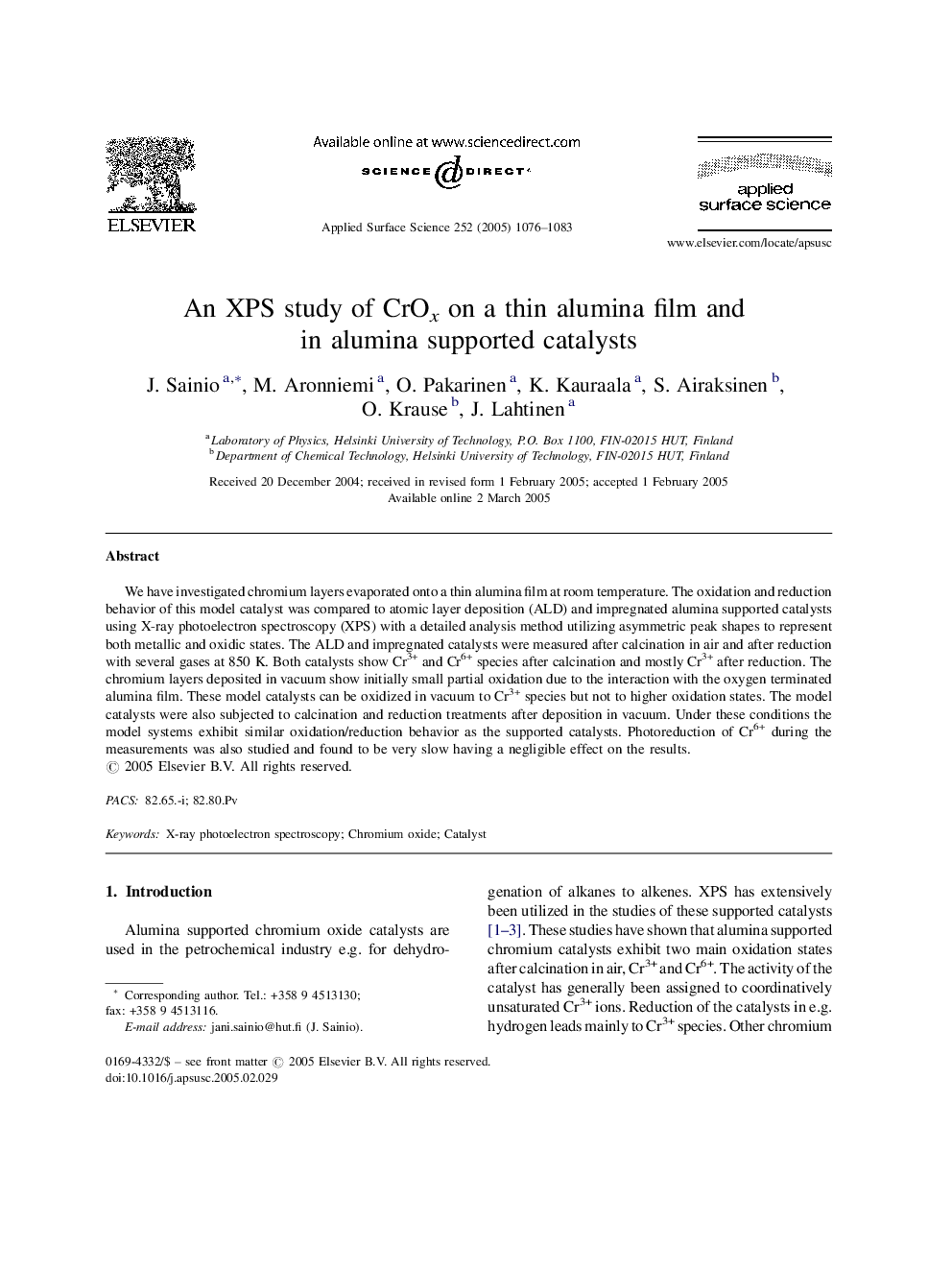| Article ID | Journal | Published Year | Pages | File Type |
|---|---|---|---|---|
| 9566711 | Applied Surface Science | 2005 | 8 Pages |
Abstract
We have investigated chromium layers evaporated onto a thin alumina film at room temperature. The oxidation and reduction behavior of this model catalyst was compared to atomic layer deposition (ALD) and impregnated alumina supported catalysts using X-ray photoelectron spectroscopy (XPS) with a detailed analysis method utilizing asymmetric peak shapes to represent both metallic and oxidic states. The ALD and impregnated catalysts were measured after calcination in air and after reduction with several gases at 850âK. Both catalysts show Cr3+ and Cr6+ species after calcination and mostly Cr3+ after reduction. The chromium layers deposited in vacuum show initially small partial oxidation due to the interaction with the oxygen terminated alumina film. These model catalysts can be oxidized in vacuum to Cr3+ species but not to higher oxidation states. The model catalysts were also subjected to calcination and reduction treatments after deposition in vacuum. Under these conditions the model systems exhibit similar oxidation/reduction behavior as the supported catalysts. Photoreduction of Cr6+ during the measurements was also studied and found to be very slow having a negligible effect on the results.
Related Topics
Physical Sciences and Engineering
Chemistry
Physical and Theoretical Chemistry
Authors
J. Sainio, M. Aronniemi, O. Pakarinen, K. Kauraala, S. Airaksinen, O. Krause, J. Lahtinen,
